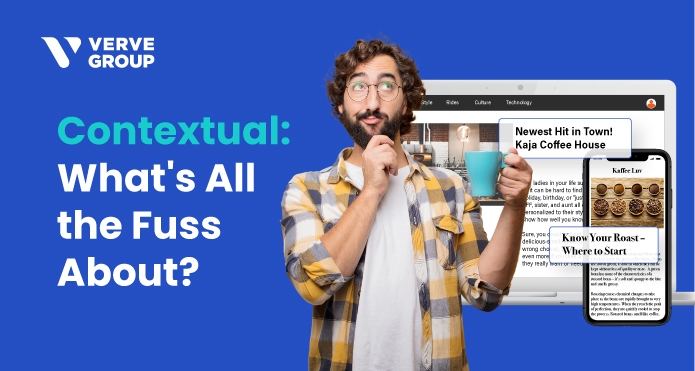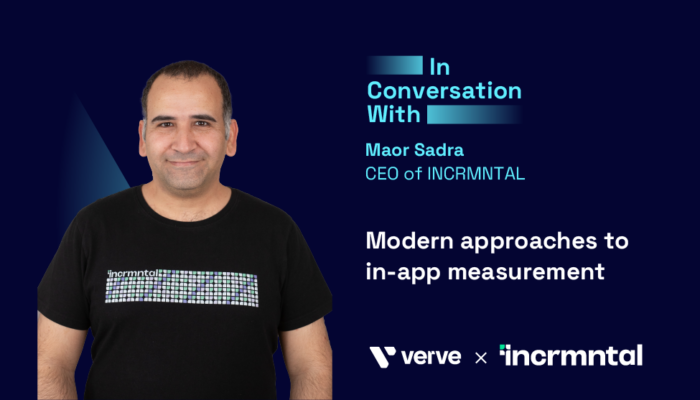Over the past few years, the ad tech space has turned a brighter spotlight onto the concept of contextual targeting. Understandably, given the emphasis the digital advertising industry has placed on audience-based targeting for the past 10+ years, many marketers have a big question: Why the huge push toward contextual now? And what does it really mean for my business?
The simple fact is that many of the assumptions and capabilities underpinning the rise of audience-based targeting are going away, or at least fundamentally changing. Businesses are confronting what losing various audience identifiers means for how they’ll operate and communicate with customers and prospects. Contextual targeting solves those challenges today, empowering marketers and publishers to move forward confidently.
Let’s dig deeper into the core questions we’re hearing in the marketplace about the growing need to embrace contextual targeting.
Is contextual just a fad?
Don’t let the recent buzz around contextual lead you to believe its relevance is new or fleeting. In reality, contextual has been around for a very long time. In recent years, the industry began emphasizing identifier-based tactics over contextual ones. However, with the privacy-first movement rightfully gaining steam, we’re seeing contextual becoming the No. 1 solution for advertisers in the near future. And with advances in AI and machine learning, we can improve contextual marketing multi-fold with better context classification and enriched campaign optimization metrics.
How can contextual benefit me?
Contextual targeting represents the go-to solution for staying connected with customers and prospects in a post-cookie world. Even better, programmatic contextual targeting offers the flexibility to help brands achieve the outcomes that matter most to them.
As more audience identifiers fade from the scene (e.g., Apple’s IDFA deprecation is already a reality, Google is bringing its Privacy Sandbox to Android, and third-party cookies will become all but irrelevant within the coming year), contextual represents the path toward maintaining relevance with customers. And contextual’s ability to connect in a relevant way with users based on what they’re reading or viewing, rather than their personal data, will continue to be a safe targeting alternative amid a quickly evolving privacy landscape.
In terms of benefits of contextual targeting, there are several essential differentiators over identifier-based audience activation, including:
-
- Relevancy: By targeting based on context vs. audience, advertisers ensure their message is relevant in the moment it is delivered.
-
- Privacy: Contextual is always available at scale for targeting — without having to worry about complying with ever-evolving privacy regulations. Because contextual ad targeting enables users to remain anonymous, it future-proofs an important piece of the puzzle for marketers.
-
- Recency: Today’s contextual targeting technology has gotten incredibly good at classifying page content and discerning nuances in tone that are meaningful to advertisers and their brand safety efforts. But most importantly, improvements we’re seeing in classification recency — i.e., classification within seconds of publication versus days or weeks — are a product of massive advancements in technology in digital advertising, and represent huge leaps forward for the industry.
In other words, why waste time and effort with solutions whose days are numbered when you can invest in a well-versed, forward-looking solution like contextual?
Can every contextual targeting partner do the same thing?
Contextual capabilities vary significantly from company to company, with one of the biggest differentiators today being recency. A lot of the contextual players target content based on pre-identified contextual segments, and this classification kicks in almost 24 hours after the content is live. That means a lot of the campaigns miss out on the latest content.
Recency has, to date, been an underappreciated but incredibly important part of the contextual targeting equation. That’s because most pages being read at any given moment were published in the past 6-24 hours — meaning they’re the pages that are most relevant to advertisers too. Marketers need to identify partners, like Verve, that can analyze and classify content in real time, as soon as it’s live, allowing brands to target high-propensity users who are browsing the latest content. Beyond enabling improved outcomes due to the content recency, this ability to target new content opens up tremendous scale for marketers as well.
How can we measure campaign success using contextual?
Regardless of a marketer’s objectives, contextual targeting offers many ways to measure the success driven by programmatic campaigns. Here are a few approaches to consider:
Upper-funnel:
-
- Viewability
-
- Brand safety
-
- Attention score
-
- Brand interest lift correlated with web visits
-
- How attention metrics correlate with indexes against lift studies
Mid-funnel:
-
- The landing page visits of a brand
Bottom funnel:
-
- Business outcomes from campaigns
-
- Sales uplift
Why should I invest in contextual if my current targeting methodologies are working just fine?
If it ain’t broke, why fix it? We certainly understand why this question arises. But here’s the simple truth: even if a company’s current targeting approach seems to be delivering on campaign goals, there’s a strong possibility that adding contextual could deliver even better results. But even more importantly, it’s almost certain that any current targeting methodologies built on audience identifiers will become increasingly ineffective as time wears on. Furthermore, research has clearly shown that consumers find behavioral targeting to be both degrading and creepy, so brands that truly want to align with their customers for the future need to be respecting these sentiments within their marketing plans.
For companies that want to continue leveraging audience identifiers until they go away, contextual can complement those strategies today and fill in widening gaps as the industry moves forward. What’s most important for companies is to recognize that moving to contextual is not a switch that can be flipped in an instant. Brands need to be preparing for the future now by testing strategies and approaches with partners.
Verve is a consumer-first advertising suite focused on growing and nurturing a full-stack advertising solution. To learn more about how you can reach audiences with contextual segments with speed, accuracy, and efficiency, contact us below.





